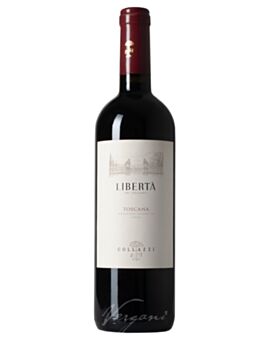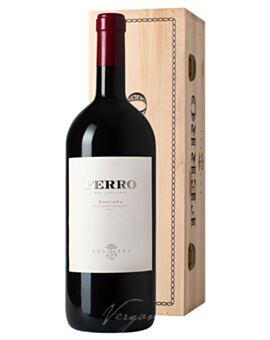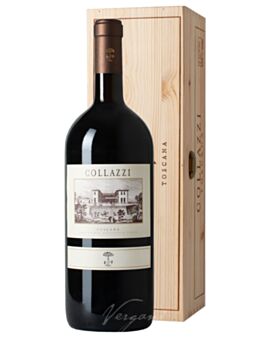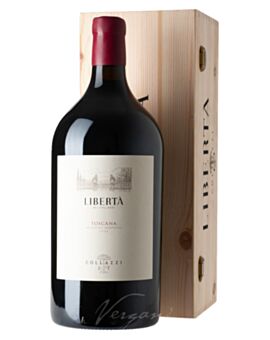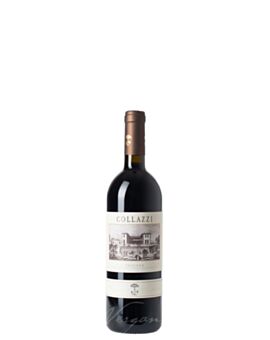Collazzi
Collazzi
Collazzi is a flagship winery in Tuscany, where the Marchese Lamberto de' Frescobaldi with oenologist Alberto Torelli and his team, thanks to new ideas, is always rocking to new heights. A visit that also goes through the history of the centuries.
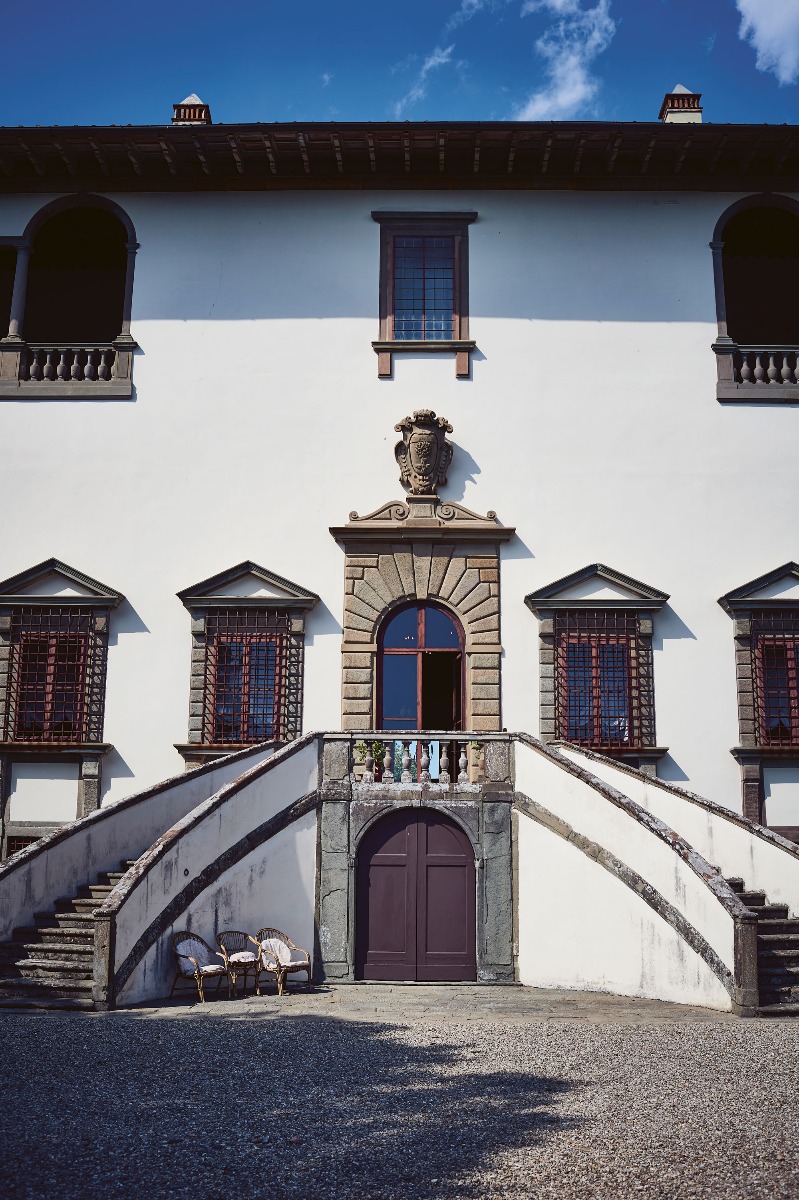
"This is where I learned to ride a Vespa," says Marchese Lamberto de' Frescobaldi, pointing to the dusty cypress avenue. Then as now: he loves speed. On motorbikes, in racing cars. We'll come back to that. The avenue also leads away from our story, away from one of the most important villas in the region around Florence, and anyone who knows Florence and its region will guess what this statement means. But before we get bogged down: where are we, what are we doing? We are standing in front of Villa Collazzi. It is in Giogoli, very close to Scandicci, 7 kilometres outside Florence, on the "Colli Pazzi", as the Marchese puts it. Ah yes - you can see the dome of Santa Maria del Fiore Cathedral. As the name Frescobaldi suggests, it is all about the unconditional love of wine. "Collazzi is a private project," the Marchese clarifies, however. "This is where we used to spend our holidays," he adds. This is how one imagines country life. In a majestic villa that was completed in 1560 based on the plans of Michelangelo's pupil Santi di Tito. Surroundings? 300 hectares of land, of which 120 hectares are olive groves, 33 hectares are vines, the rest is forest. Inside, a consecrated private chapel with a pope's chair, a library, an extensive archive of writings documenting numerous transactions between the Strozzi, Dini and Medici families, probably the largest billiard table in Italy, which shows that billiards were played by hand in those days, two valuable globes, meticulously made around 1711 without Australia, because it was not known at that time. There are radiant pictures hanging on the walls, so large that they must have been created in the rooms themselves, artistically crafted porcelain for the Dini family in a massive buffet whose dimensions cannot be grasped with a normal tape measure, and furniture upon furniture that could tell a story. But they remain silent. The interior of the villa is tranquillity itself.
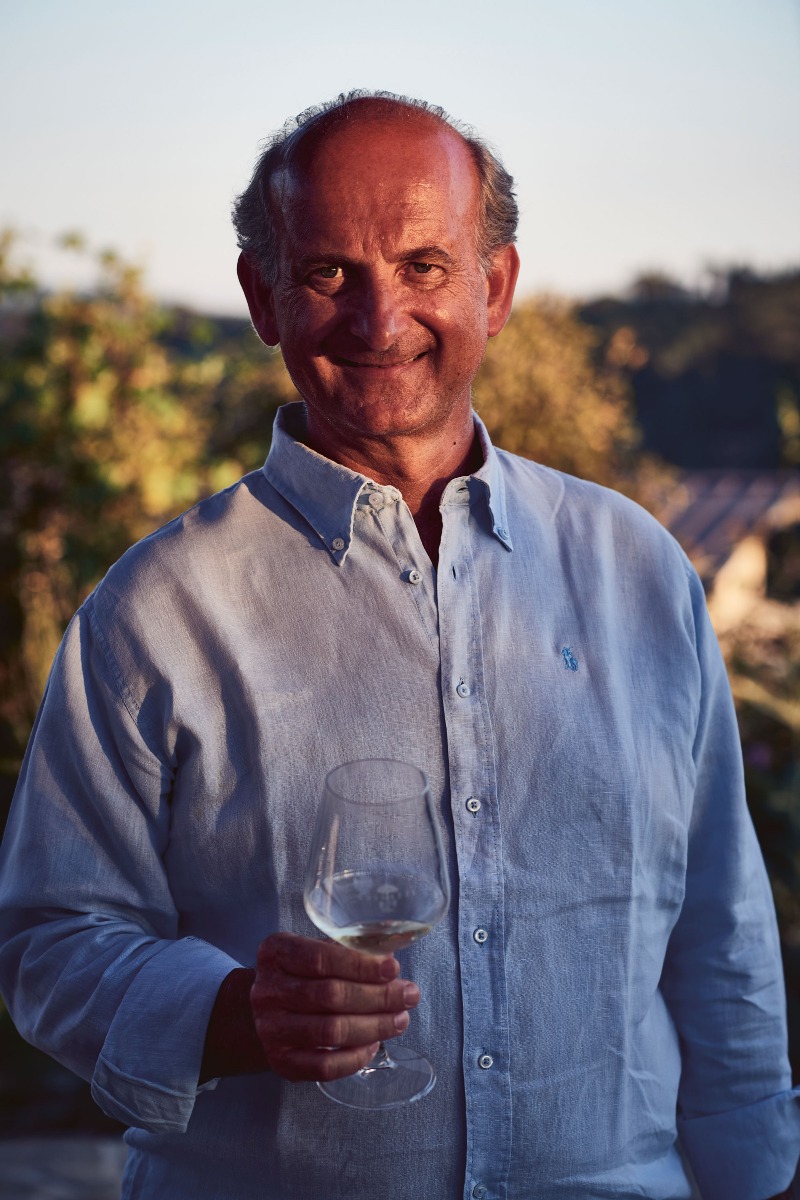
"Collazzi is like a beautiful dream for me."
Lamberto de' Frescobaldi
Everything is an original. Room after room of walk-in cultural history to touch - well. The villa remains primarily a private home and is not a museum, although the family tends to spend more time on the upper floor. Downstairs, the large, unheated, high-ceilinged rooms, invisibly connected behind the scenes by the servants' corridors, are self-evidently impressive. The small things that have stoically survived the centuries here in all modesty and despite all the turmoil, scatterbrains and bombardments also tell of the real essence of wealth. Remarkable. For example, there is a strange voting box on the table in the red room (next to an antique wooden orange press). You pass it around, choose a ball and place it in the box under the wooden cover, invisible to the audience. Either on the left for "SI" or on the right for "NO". This practical little box has probably prevented many an argument in the family's decisions.
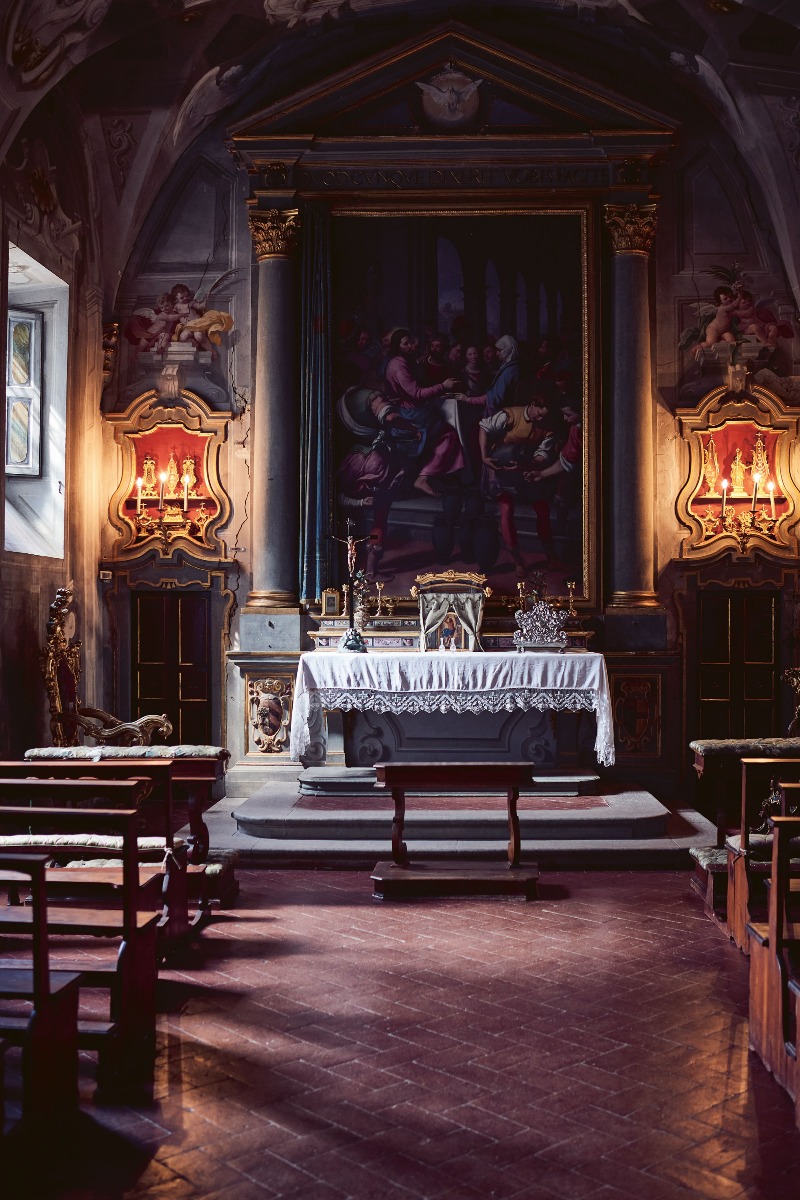
The small, inconspicuous chaise longue in one of the bedrooms could also groan. Prince Charles is said to have been so taken with it that he had a copy made. He and Diana stayed in this room in April 1985. The Marchi family is friends with the English royal family and the Frescobaldi family supplied wine there and to other royal houses as early as the 15th century. Do you know Thomas Cromwell? He met the banker Francesco Frescobaldi in Florence in 1533 and who knows what other connections he made? It's a different story, though much here is linked to much else, just as the Marchi and Frescobaldi families have been linked since 1958. It starts right away. First of all, however, the bankers Baccio and Agostino Dini bought the property in 1534, on which the aforementioned architect Santi di Tito completed the construction of the villa 26 years later. In 1933, the brothers Carlo and Giulio Marchi bought the property, renovated and completed it in its present form. Admittedly, this is a big leap in time, but we have to move forward because the Marchese has little time. The story of how he learned to ride a Vespa in the Villa Colazzi has - as mentioned - to do with marriage. Bona Marchi, who had taken over the villa together with her brother Carlo, married a man named Vittorio de' Frescobaldi and they had four children. Son Lamberto has been in charge of agriculture and viticulture in the de' Frescobaldi family business since 1989 - "in the 30th generation", as he routinely emphasises. Somehow it was obvious that he would also take care of the fate of the vines at Collazzi. "Admittedly, with the name de' Frescobaldi it's a little easier," he says mischievously. Our story is slowly picking up speed.
"Collazzi is like a beautiful dream for me. My mother and uncle asked me what could be done here. I replied that I was incapable of anything here except making some wine." The departure - a done deal. "From the beginning, we didn't see Collazzi as a Frescobaldi winery. I didn't want any conflicts of interest and thanks to Collazzi I was able to personally meet other people, people like Reto Vergani, who serve smaller distribution channels and are highly specialised. People who say what they think and feel like building the project of our hearts with us. What luck!" he says. The old vines were pulled out, and the first vintage came on the market in 1999. The vineyards around Collazzi were successively and predominantly planted with Cabernet Sauvignon, Merlot, Cabernet Franc and Petit Verdot. Sangiovese is looked for almost in vain, although it naturally appears in Bastioni, the house's DOCG Chianti Classico, where it is rounded out only with a little Merlot and Malvasia Nera. "We wrote the first invoice by hand," recalls the Marchese. They didn't have a computer, he says. "Collazzi is what you do when you want to and can look at all the details in wine production," he says. The enthusiastic and inspiring joy resonates palpably. "That's not possible with larger projects, here we can control every step and at the same time we can't afford to make any mistakes," he says, and by that he means Alberto Torelli in particular, whom he hired 17 years ago to be the oenological director. Torelli nods. He too has joined us. It is evening. We are sitting in the Locanda Collazzi, the fine-dining restaurant located above the wine cellar and dedicated to "excellence in food and wine and a sense of beauty". Lamberto de' Frescobaldi explains it this way: "Much of what we offer here is home-grown. Cattle, chickens, olive oil, wine - we put a lot of spirit and soul into it," says the Marchese, knowing that not all guests understand this luxury as such. "Collazzi is not a codified beauty," he says, but he doesn't want to elaborate.
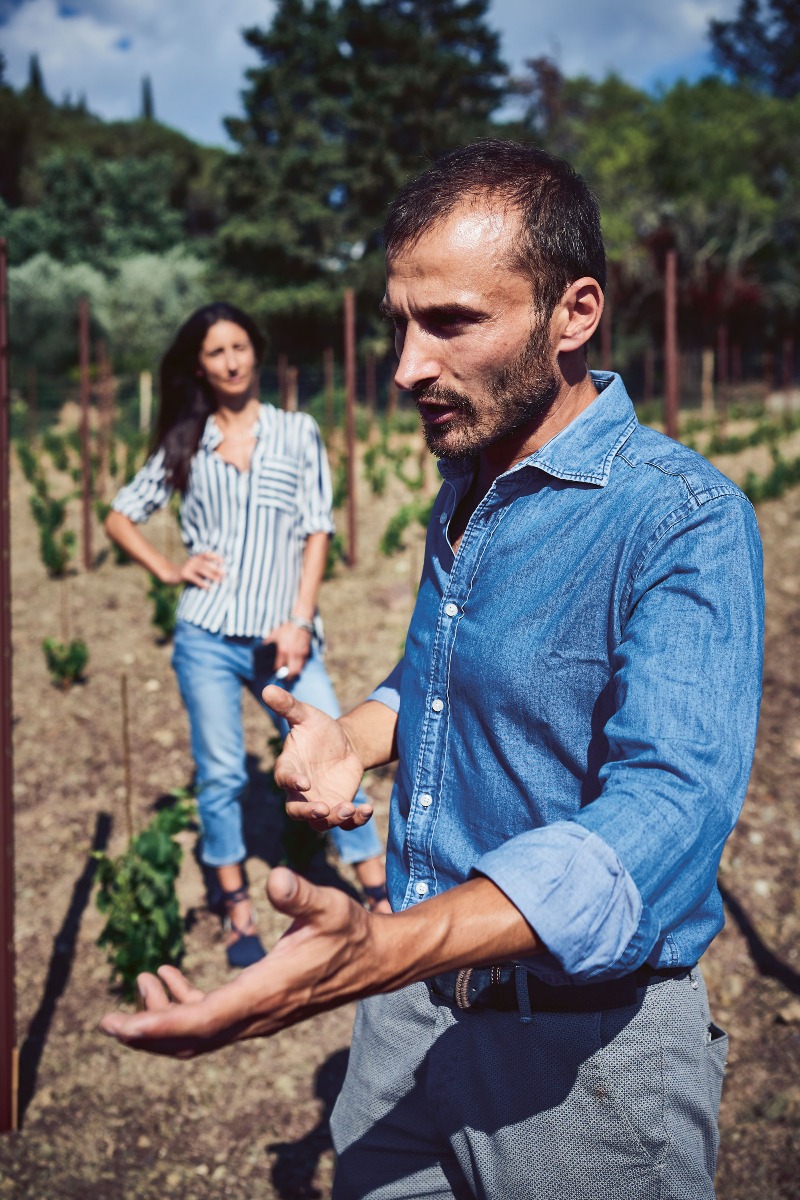
Alberto Torelli, on the other hand, can hardly contain himself. You can feel his enthusiasm literally flowing through his body. "I was able to help build everything, year by year, step by step. An old fattoria has become a leading quality winery - that's all we're interested in," he says, and he says it without bragging. "With 5,000 bottles of wine per hectare, Collazzi remains a small winery, but one that still fires me up every day, the passion just won't leave me, I'm infatuated with this place and its soils," he says, who started working on these hills at the tender age of 23. Allegedly because Torelli, his uncomplicated manner and his honest opinion impressed the Marchese at a wine fair in Merano, who offered him a job while he was still at the fair. "I like it when people say what they think and know what they want. Because Reto Vergani does the same, we have been able to grow together since 2004. We have found each other, it's a beautiful path where we meet again and again with a smile," says Lamberto de' Frescobaldi. "Unfortunately, the Marchese doesn't accept everything," Vergani murmurs to the table, while the Marchese follows up: "Well, at least Vergani appears to be a man of honour." Then they laugh again and tell each other stories like the one in which Vergani bought the entire production of the first vintage of the then still unknown wine called Ferro, vinified 100 per cent from Petit Verdot. At the Vinitaly. From Alberto. "Alberto calls me," the Marchese recounts: "... and tells me that Vergani bought all the 2010 Ferro! I reacted somewhat indignantly and explained to Alberto that there was no way! Punto." - "This is one of the best Petit Verdot in the world", says Alberto, Master of Wine Fiona Morrison told him when she was still tasting the Ferro from the barrel. She must know. After all, she is married to Jaques Thienpont and yes, Le Pin in Pommerol is one of the three châteaux they run. "Fiona Morrison encouraged us because she said that she had never tasted a 100% Petit Verdot that was so complex without being vulgar," says Alberto Torelli with emotion. The mineral-rich sand, clay and limestone soils and the north-facing location are responsible for this.
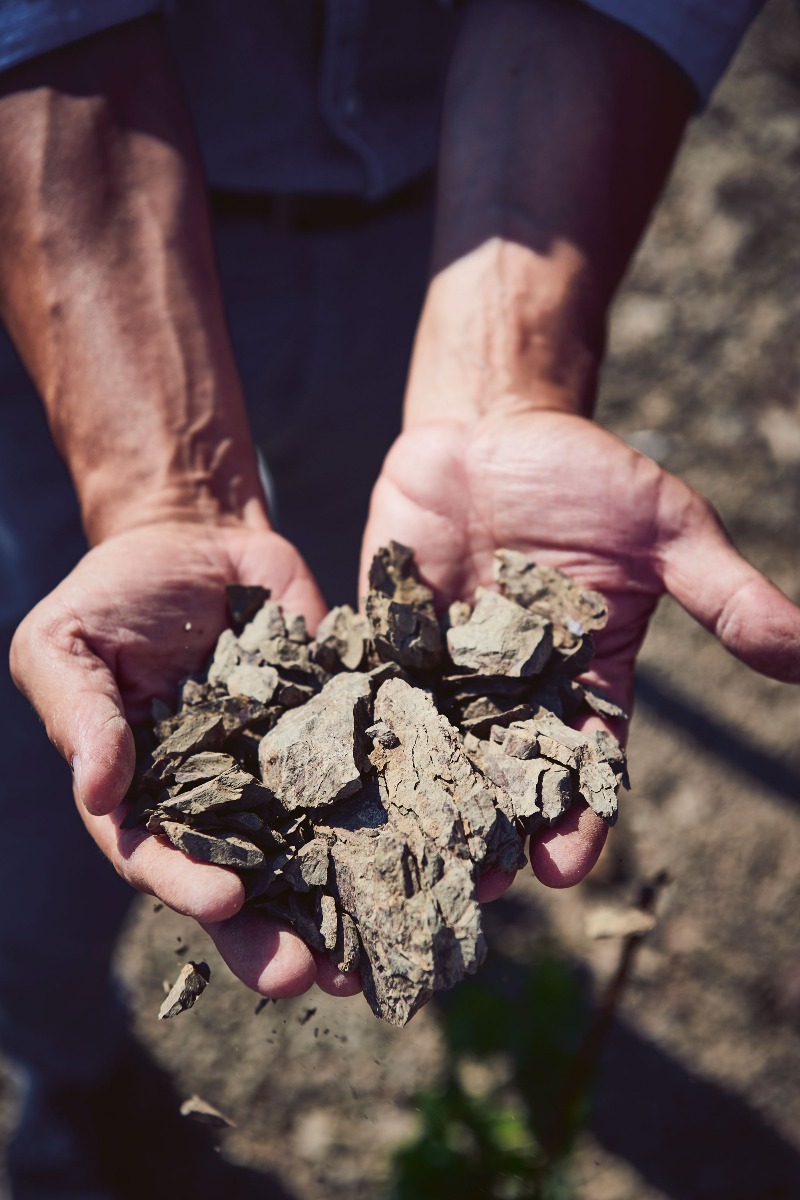
Again Lamberto de' Frescobaldi gets involved: "And then Reto Vergani came and bought everything! A lunch was scheduled, the mood was actually good, the Marchese recounts and continues: "Then I allowed myself the quiet remark that I would unfortunately have to keep back 250 bottles of Ferro. Vergani did not listen. He just said that if I liked the wine so much, I could buy it back from him!" Michelangelo traded art for wines from the de' Frescobaldis, but let's not go there. In any case, since the Ferro exchange, several other joint projects have come into being, for example the Fiano aged in barriques under the label Anima di Vergani. "As a thank you, we always put some olive oil or two more wine cartons on the pallet after every order and with every delivery," says Alberto. And the Marchese takes over: "And then one day Vergani calls and urges us to stop. It was driving his bookkeeping crazy. And we were just trying to be nice!" And so they laugh and talk until night falls on Collazzi. Then Lamberto de' Frescobaldi pulls out his mobile phone and shows the video, in which he can easily be seen riding an off-road motorbike through the vines. The pace is high and the newly planted plot below the villa seems to exceed the wildest expectations. Alberto Torelli: "For 15 years I have wanted to plant a vineyard on this spot." The soil is 100 per cent Gallestro Toscano, a very porous, crumbly rock. There is a lake under the vineyard. "A fantastic location," Torelli enthuses. "You'll see," says the Marchese, smiling. "If only the price doesn't go up ..." says Reto Vergani.
Text: Andrin Willi | Picture: Lukas Lienhard | Source: Edizione Vergani 13











